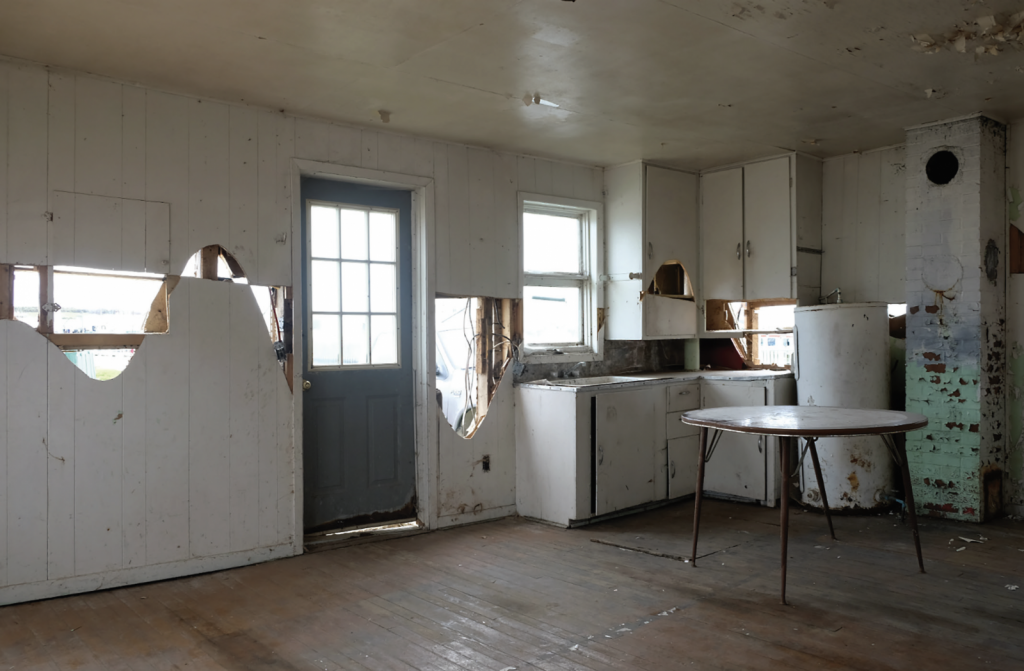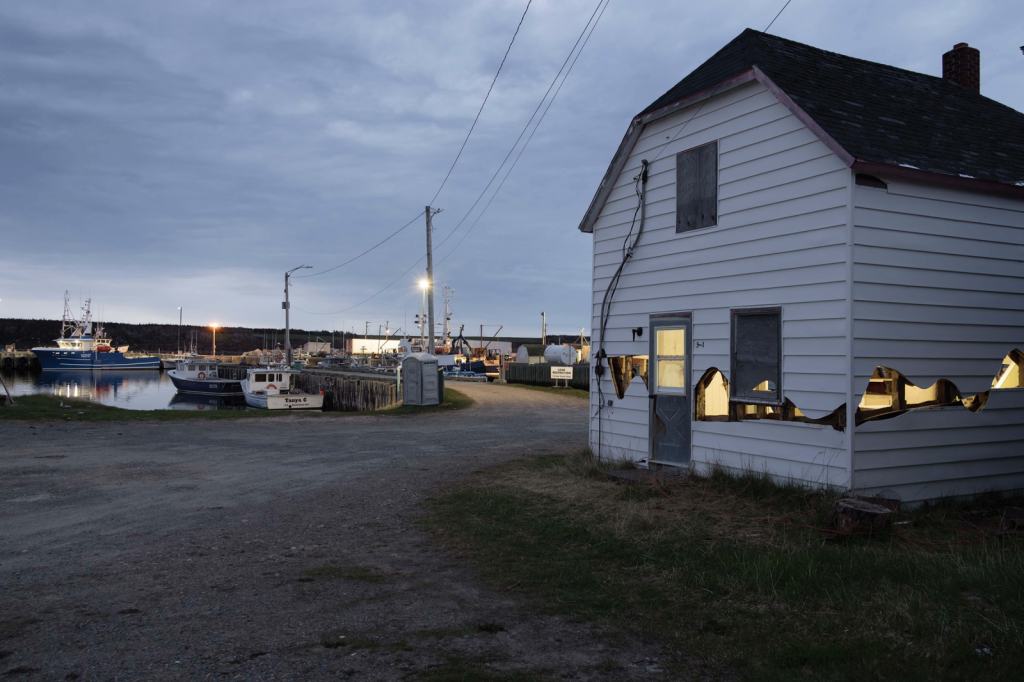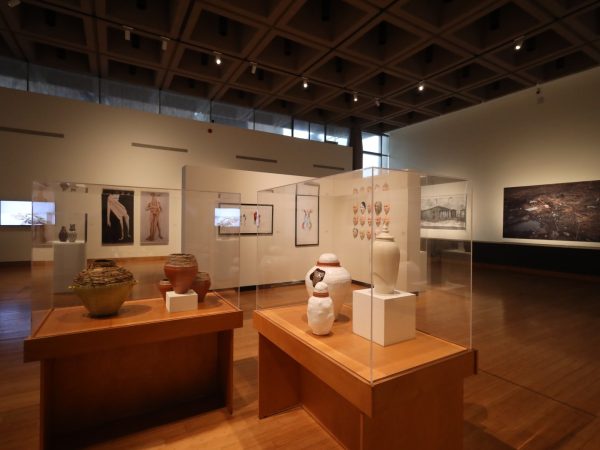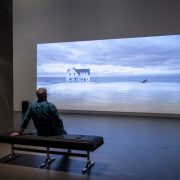
Photo: Eyelevel Gallery
Vancouver-based artist Emily Neufeld unfolds the stencil from her suitcase and traces it onto the wall of the more than 100 years old fishing shack slated for demolition in Cheticamp, Nova Scotia. Then she begins to cut through the exterior wall.
Documentation of Neufeld’s art installation Before Demolition: Tides, a part of her series Before Demolition, was recently exhibited at Eyelevel Gallery in Halifax. In this on-going series, Neufeld enters homes scheduled for demolition and examines them as an archive. In Before Demolition: Tides, she created an installation in a Cheticamp fisherman’s home, where she responded to the evidence of a life lived.
Before Demolition is just as much about the histories of the land as the homes built on it, and this begins with Indigenous peoples.
“That’s always forefront in my mind: whose land was this before we built a yard and a fence and a house?”
As Vancouver and Cheticamp are part of Turtle Island, they are situated on unceded and unsurrendered Indigenous territories—Vancouver is Musqueam, Squamish, and Tsleil-Waututh territory, and Cheticamp is part of Mi’kma’ki, home of the Mi’kmaq.
In Before Demolition: Tides the connection to the land centres itself in the history of the home. She describes its provenance only in its broadest strokes: it had been a home for fishermen for most of its life, as well as storage for nets and other fishing gear. More recently, the house had suffered a fire to its second floor, which condemned it. In contrast, she describes the homeowners’ relationship to the land in much more detail.
“You could really feel the cold. Not just the climatic cold, but the coldness of being out on a fishing boat in the wind and the rain and pulling up fish from icy waters,” says Neufeld. “There’s something really tough and hardy about the feel I got there. It felt very wholesome in a way.”
Despite the significance of the land to Neufeld’s work, her limited time in the home forced her to plan the installation in advance. Being separated from Cheticamp by more than 4500 kilometers was something she struggled with logistically.
“I spent a lot of time on Google Maps, just wandering around the area on street view.” In her research, she was struck by the lack of green. Sitting on the edge of the Gulf of Saint Lawrence, the winds—les suêtes—have stripped the land of its vegetation. The house lacked any kind of yard.
“It’s basically sitting in a parking lot for the wharf. The land of the house is really the wharf and the water,” she says.

cut through the walls. Installation with Eyelevel Gallery
Previously, Neufeld has approached her installations either by cutting away parts of the home, often sections of the walls or floor, or by adding to it, typically bringing in natural elements, such as plants. In Cheticamp, Neufeld combines the two processes, as she cut away parts of the exterior wall facing the ocean, and brought in what she could of the natural world surrounding it.
The stencil prepared in Vancouver is a graph, mapping the moon phases, represented by a series of long plateaus, against the tide chart, a series of dramatic peaks and valleys. It visualizes the relationship between the two; the differences between high and low tides lessening as the moon shrinks in size. Neufeld cuts away the wall in the negative space between these lines, creating an uninterrupted sightline between the interior of the house to the exterior, which is the ocean.
“That’s what was different about this project from the others: it is from the inside looking out, instead from the inside looking in at itself.”
Similar to Neufeld’s previous works in the series, Before Demolition: Tides comments on humanity’s exploitative relationship with natural resources and “how we only seem to live where we can extract.”
Cape Breton is currently dealing with the repercussions of such a relationship, as over-fishing has crippled the industry, leading, in part, to the current out-migration and downturn in the housing market and economy generally.
Though left vacant by other means, the Cheticamp fishing shack can be read as a symbol for the danger of depleting these resources, a warning of the end result of our destructive way of life. Ultimately, Before Demolition: Tides returns to having respect for our relationships with the land and water.
“I am really thinking about what it means to be a colonizer here: how the land was used by the First Peoples, how different it is now, and how we can honor them in a much better way.”
















Leave a Reply